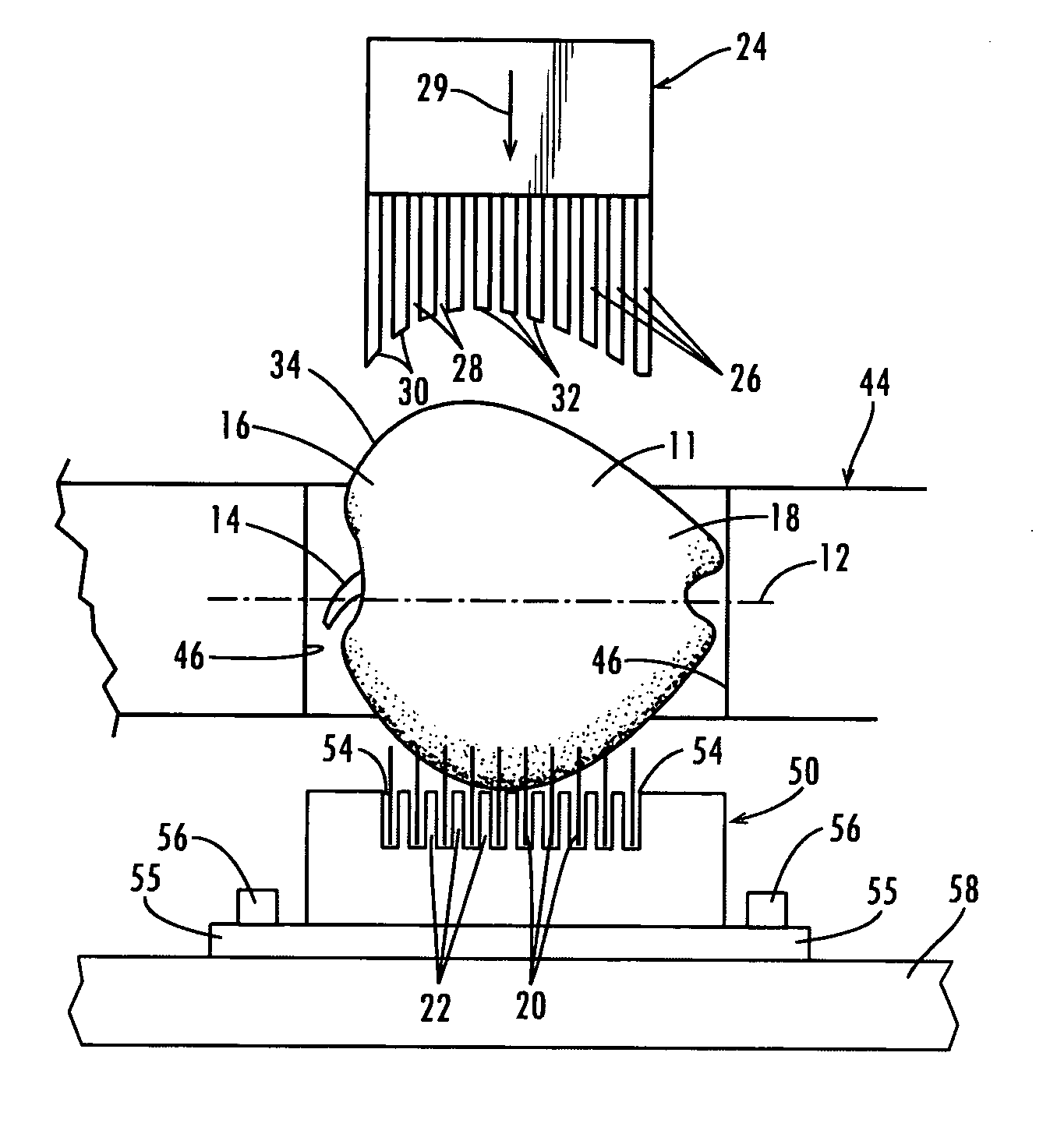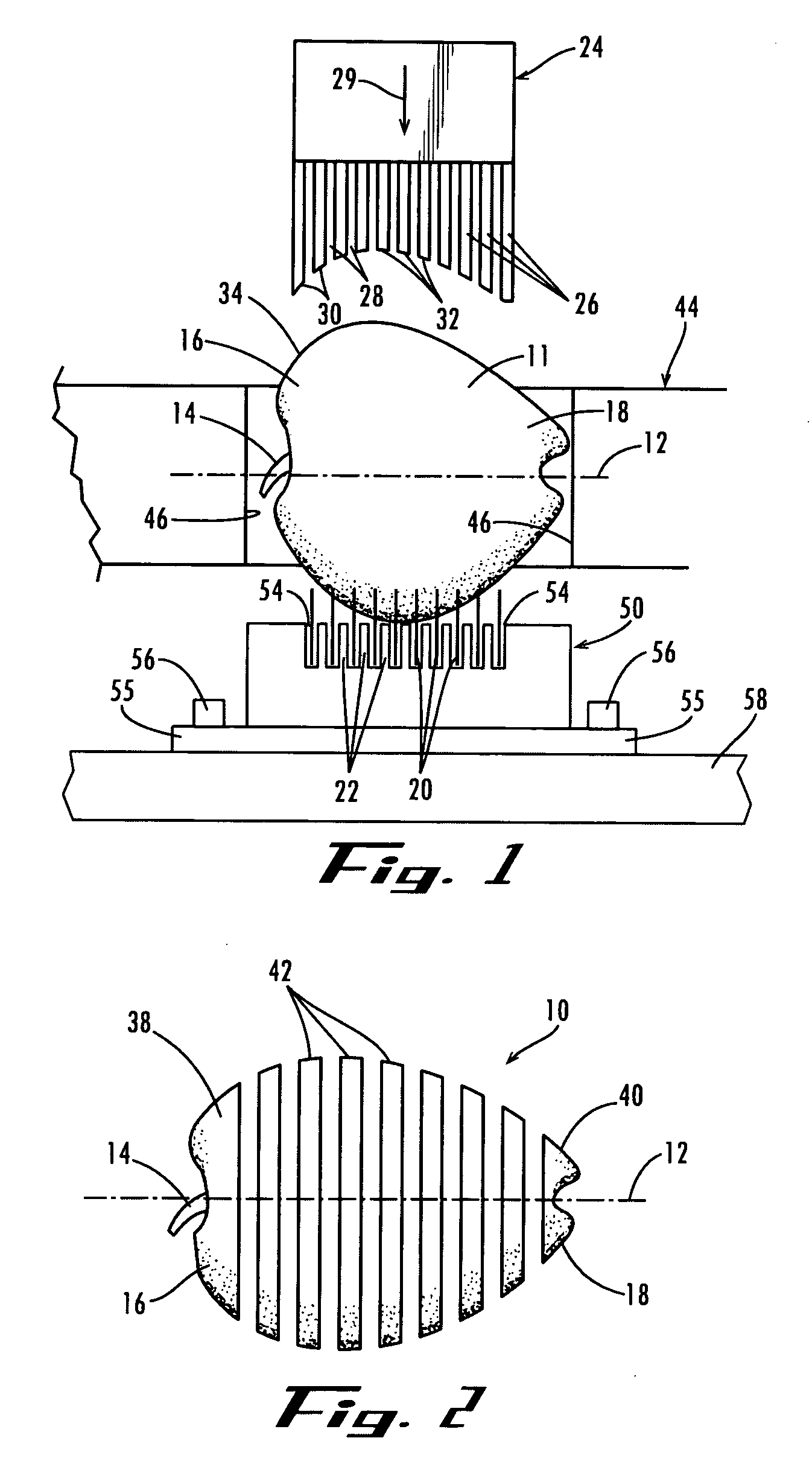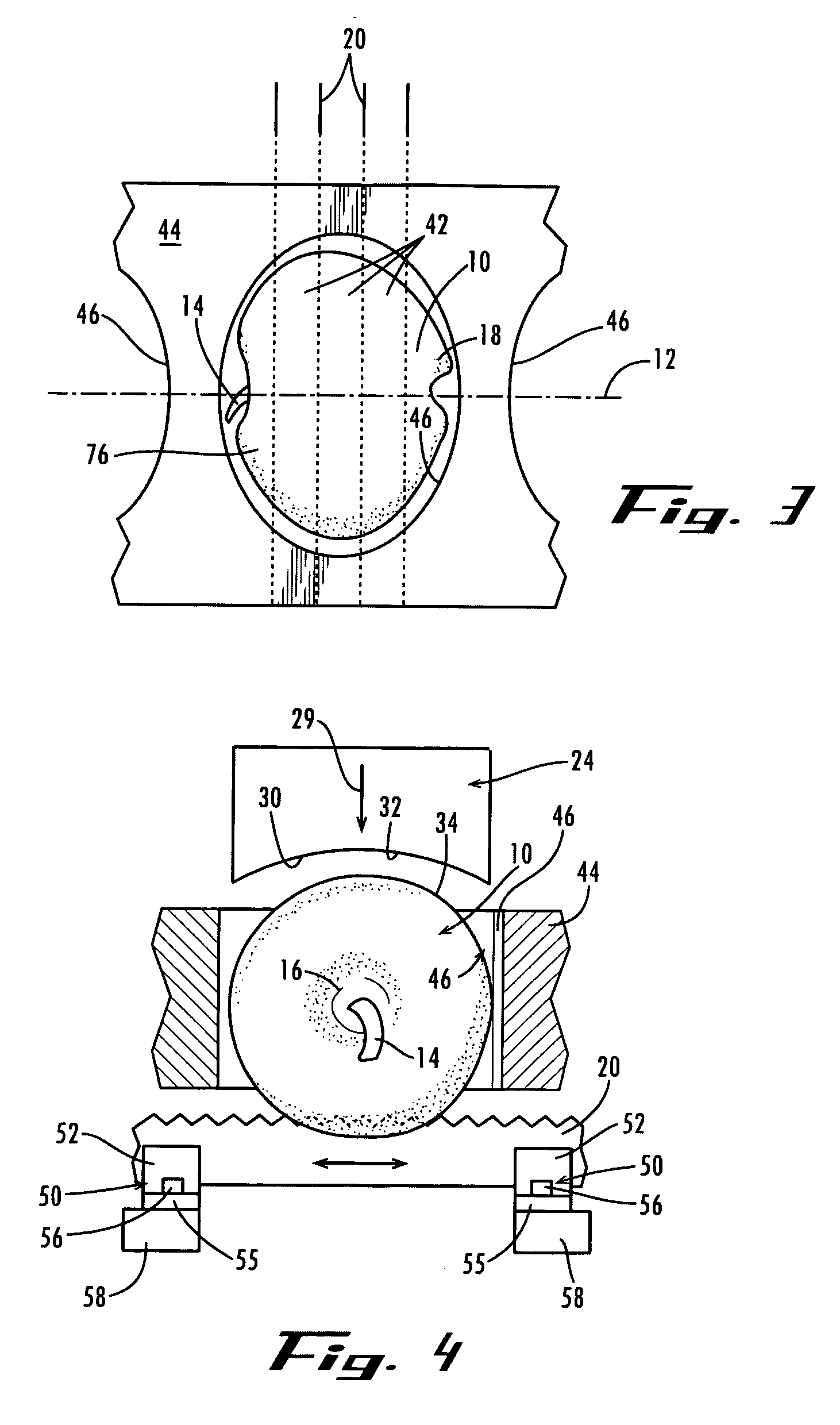Article slicer
a technology of article slicer and slicer, which is applied in the field of article slicer, can solve the problems of substantial amount of preparation time, affecting the initial quality of tomato slices as well as their ultimate quality, and achieves the effects of economic, rapid, gently and reliably sliced and packaged
- Summary
- Abstract
- Description
- Claims
- Application Information
AI Technical Summary
Benefits of technology
Problems solved by technology
Method used
Image
Examples
Embodiment Construction
[0053] Referring now in more detail to the drawings in which like numerals indicate like parts throughout the several views, FIG. 10 shows a perspective view of the article slicer 10 that simultaneously slices a plurality of articles such as six tomatoes 11 or other fruits and vegetables, with each article sliced into a pair of end slices and a plurality of intermediate slices. The invention is hereafter described as a tomato slicer, but other articles can be sliced, as may be desired.
[0054]FIG. 1 shows one cutting station of the article slicer. A plurality of tomatoes 11 are placed in the slicer, with each tomato having a longitudinal axis 12, a stem 14, a stem portion 16, and a heel portion 18. The stem portion and heel portion are at opposite ends of the tomato, with the axis 12 passing through them. The tomato 11 is placed on a plurality of parallel cutter blades 20 that are spaced apart, as shown by the spaces 22 in FIG. 1.
[0055] The ends of the cutter blades 20 are mounted o...
PUM
| Property | Measurement | Unit |
|---|---|---|
| distance | aaaaa | aaaaa |
| thickness | aaaaa | aaaaa |
| lengths | aaaaa | aaaaa |
Abstract
Description
Claims
Application Information
 Login to View More
Login to View More - R&D
- Intellectual Property
- Life Sciences
- Materials
- Tech Scout
- Unparalleled Data Quality
- Higher Quality Content
- 60% Fewer Hallucinations
Browse by: Latest US Patents, China's latest patents, Technical Efficacy Thesaurus, Application Domain, Technology Topic, Popular Technical Reports.
© 2025 PatSnap. All rights reserved.Legal|Privacy policy|Modern Slavery Act Transparency Statement|Sitemap|About US| Contact US: help@patsnap.com



